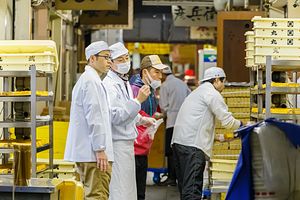Japan’s now seemingly chronic short labor shortages do not appear to have an end anytime soon, as immigration and guest worker reforms have stalled. Increasing efficiencies in some sectors, particularly agriculture, through improved techniques and robotics could help ease the issue until a more long-term solution can be agreed upon. The difficulty will be in bringing society around to those solutions before the labor shortage, and the shrinking population in general, wreck a once vibrant economy.
Government data released last Thursday showed that there were 109 available jobs for every 100 job seekers in May, the 18th month in a row that ratio had increased. The data also showed that machine orders had dropped in May, further adding to fears that the nascent economic recovery may be stalling. However, the recent upturn in the economy has caused companies to scramble to find new employees. Major Japanese retailers like Uniqlo and Don Quijote are attempting to attract workers by either offering more full-time positions or simplifying their application processes, yet the structural problem of a rigid labor market that doesn’t allow workers to easily move to fill jobs that are in demand persists. Low-wage, low-margin companies that took advantage of deflation appear to be taking the biggest hits according to the government data. Airlines, where the pool of available pilots is shrinking due to the mandatory retirement age of 64, also have difficulties, although the government is considering raising this age next year.
A recent article in the Japan News highlighted new efficiencies and innovations in the agricultural sector that could see increased profits and production, such as new rice planting techniques and new fertilizers that only need to be applied once per season. There are also hopes that if Japan were to join the Trans-Pacific Partnership and truly open its agricultural sector to competition, small farms might be consolidated to take advantage of scale, and thus free up more labor, although given that the average Japanese farmer is 70, the window for taking advantage of this labor would be short.
Ultimately Japan’s birthrate and immigration policy will be the deciding factors in this ratio of labor and jobs. Although Prime Minister Shinzo Abe proposed an increase of 200,000 new immigrants a year by 2050 to meet Japan’s population problem, that has since changed to a small increase in the number of foreign trainees that will only account for 0.3 percent of the work force. The public will either have to come around to the idea of a less homogenous society in order to sustain its growth, or it will have to take on the much larger task of addressing the societal problems that have led to the drastic decline in the birthrate.

































